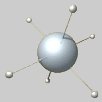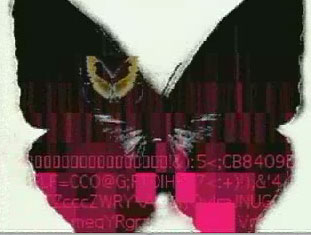
 |
New
Media Counterpoint
by Eric Redlinger |
|
|
Singing
in a chorus in 15th century Europe looked something like this: you had
your own part, individually printed, in front of you, with no hint of
what the other parts might look like. There was no conductor. The duration
of a printed note was highly variable. Deviating from and embellishing
upon the printed score was the norm, and certain pieces were designed
for entire vocal parts to be completely improvised, guided only by a
few basic principles of harmony. Although the final sound was rich and
full, the dominant compositional principle, counterpoint, highlighted
the independence of each individual voice in the blend.
Collaboration
in the new media sphere today feels a lot like what it looked like at
the dawn of polyphonic music: a semi-ordered, semi-transparent, exquisite
chaos whose effect is often judged more by the sum of its parts than
by some manner of traditional criteria. In the contemporary real-time
media performance landscape, video and sound artists, dancers (with
or without sensors), digital poets and bloggers all coexist more or
less amiably; gigantic free-for-all digital jam sessions such as events
organized in New York by Share, a group of downtown artists and collaborators,
at The Kitchen, OpenAir and other sites, thrive on few rules and much
enthusiasm for uncharted territory. With the last two years seeing an
unprecedented proliferation of software tools to mix video, audio, text,
3D objects and just about anything else that can be expressed on a computer
in real-time, Vjs, Djs and other artists have been flocking to the medium.
For the record, real-time implies performance -- the ability to edit
digital data on the fly marks a significant milestone in the vitality
of digital media for artistic expression, enabling truly new and original
audiovisual instruments and a new breed of multi-disciplinary, tech-aware
performers.
At
the same time, new networking technologies and protocols are becoming
available to enable data exchange between seemingly disparate genres.
Using open standards such as OSC (open sound control) and older models
retooled for network compatibility, such as MIDI (multiple instrument digital
|
interface) over IP, a sound artist working with Max/MSP (a popular
audio mixing and synthesizing application), for example, can share data
corresponding to beats-per-minute, amplitude, frequency modulation or any
other parameter directly with a visual artist, who may then use that data
to control and modify a stream of corresponding digital imagery with exact
precision. Add in a wireless network and this can all happen with minimal
fuss. Some applications, such as the Waag Society's KeyWorx platform,
have been created around a network from the very start, combining data synchronization
protocols with media sharing technologies similar to those found in P2P
applications to allow multiple networked performers to jointly compose a
single audio-visual canvas. All of this nerdy innovation is not happening
in a vacuum. The steady stream of international curators and festival invitations
(members of Share will be featured for two nights this February in the prestigious
Transmediale festival in Berlin) at the regular Sunday jam sessions in New
York's East Village reveals that the art world is taking notice. The trickle-down
effect to mainstream entertainment is also increasingly apparent. MTV may
have backed out at the last minute on showcasing a 'team live' of prominent
visualists mixing live video to the likes of Chemical Bros. for its New
Years Eve artists showcase, but the writing is on the walls.  |